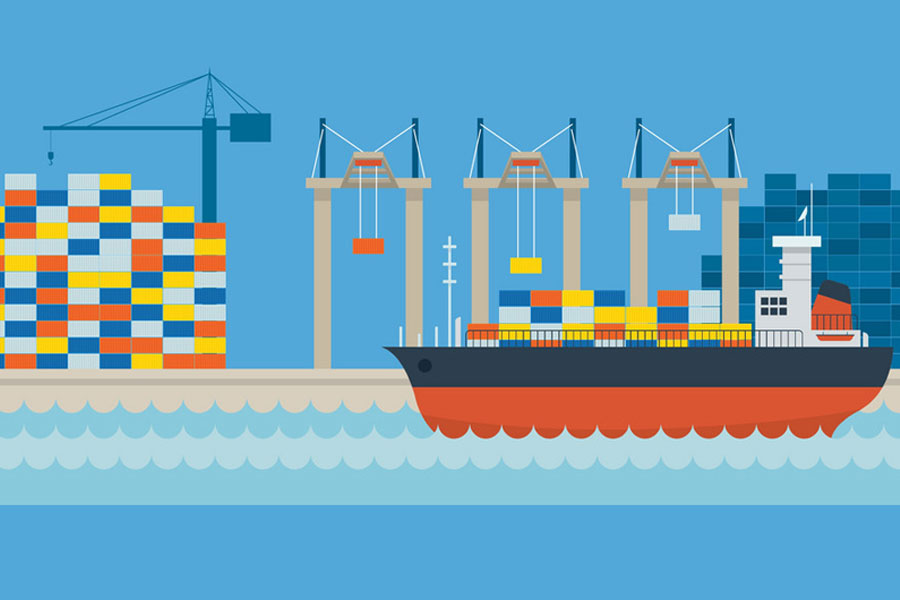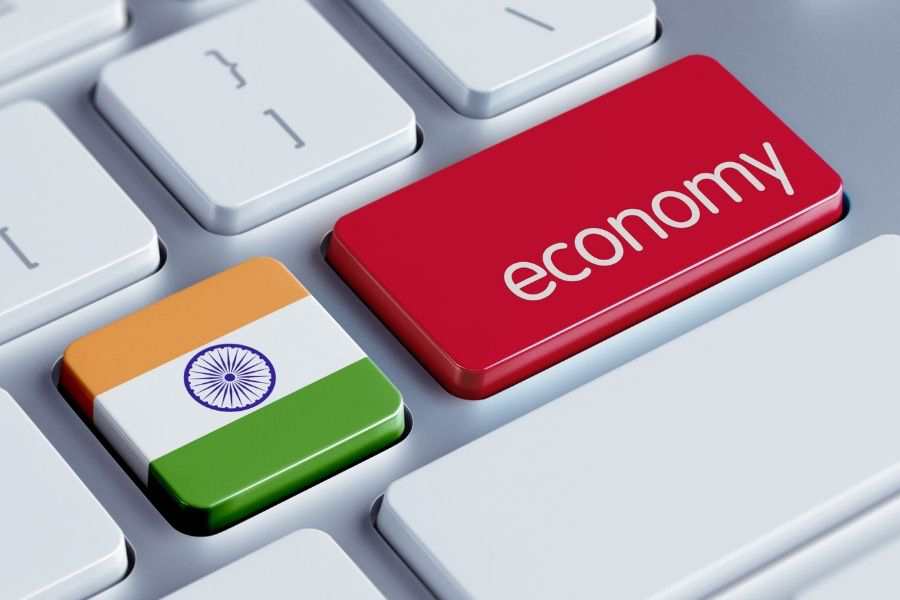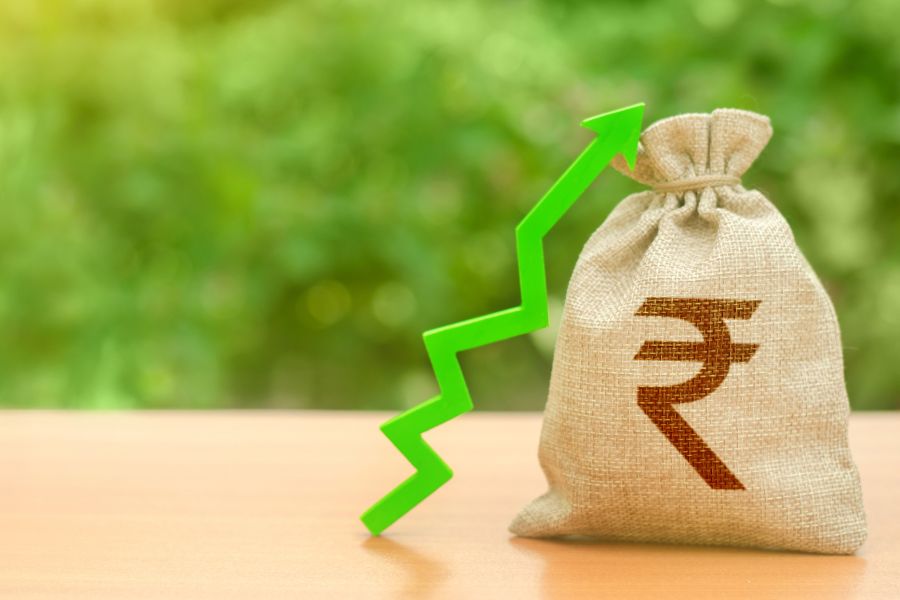Inland Water Transport – Charting the Uncharted
Inland waterways are currently highly underutilized and overwhelmed by road and rail modes of transportation. This blog explores how inland water transport is being positioned as part of India’s larger infrastructure and logistics-focused policies, and the critical concern areas that need to be addressed.
- Coastal/riverine movement of cargo is still in the nascent stage and resultantly spurred the Ministry of Ports, Shipping and Waterways to roll out the National Waterways Act, 2016 which declared 111 National Waterways in the country.
- Gati Shakti Master Plan was launched as a programme structured to comprehensively monitor and prioritize mega-infrastructure and connectivity projects in an integrated manner.
- FCI sailed off a cargo ship carrying foodgrains from Patna to Guwahati to reach out to the “East” through waterways that may otherwise have hindered access.
- Further development of inland water transport have massive investment requirements and may be bogged down by adverse environmental impacts that need greater focus in India’s pursuit of sustainability.

Freight movement in India is highly skewed in favor of road transport (60%), while inland waterways and coastal movement of cargo remain in the nascent stage (ADB, 2020)[1]. But there have been efforts to promote Inland Water Transport (IWT) in the 111 waterways (declared as NWs under the National Waterways Act, 2016), from which 25 NWs have been determined to be technically and economically feasible through Detailed Project Reports (DPRs).
Inland Waterways Authority of India has set a five-year vision to develop IWT as a self-sustaining, economical, safe, and environment-friendly supplementary mode of transport to achieve the larger growth goals of the economy. It aims to increase the share of IWT from the current figure of 2% to 2.5% in bulk and containerized cargo shipment. As part of the Maritime India Vision 2030, IWAI aims to operationalize 23 waterways by enhancing terminal and allied infrastructure, navigational aids, and RIS provisioning.
Development of the terminal will also include creation of concrete/steel, and floating platoon jetties on specific circuits for river cruise tourism. The vision also includes development of more than 10 Ro-Ro terminals and ferry terminal development in over 60 locations with state government collaborations. Ample opportunities have been identified by IWAI to allow for greater collaboration with private players, thereby opening the doors wider for IWT.
Bulk cargo transport through waterways of coal, fly-ash, and iron ore are economical, environment friendly, and less polluting than the Road and Rail modes of transport. As on date, 15 NWs are operational, 7 projects are in appraisal stage, development of 2 NWs has been taken up as per the State Financial Corporation (SFC) directives for FY 2021 to FY 2025, and development of 1 NW has been taken up with technical and investment support from World Bank under the Jal Marg Vikas Project[2].
Multi-Modal Approach – Gati Shakti National Master Plan
In a bid to herald in a new age for Multi-Modal Connectivity, PM Narendra Modi launched the Gati Shakti National Master Plan on October 13, 2021 to provide a digital platform that can enable 16 ministries including Railways, Roadways, Civil Aviation among others to come together for integrated planning and implementation of infrastructure connectivity projects[3].
Various infrastructure schemes of the Central Ministries and State Governments such as the Sagarmala, Bharatmala, inland waterways, UDAN, etc. have been linked together to comprehensively and systematically review and monitor the progress of cross-sectoral projects. Various economic zones and clusters across sectors such as pharmaceuticals, defense, electronics, industrial corridors, fisheries, and agriculture zones have been covered to facilitate connectivity, reduce logistical costs, and increase global competitiveness.
India’s Water Freight Transport
Latest data on the cargo movement through National Waterways and coastal waterways linked with National Waterways (NWs) reported a growth rate of 1.5% from FY 2014 – FY 2020 and a 13.5% annual growth rate in FY2021 over the previous year (Rajya Sabha reply of Shri Sarbananda Sonowal, Union Minister for Ports, Shipping and Waterways)[4]. The increased volume of cargo shipment through IWT has been attributed to the concerted efforts of the Government to actively develop water highways and bring down the cost of transportation.
According to the RITES Report (2014) on “Integrated National Waterways Transportation Grid”, a comparative intermodal cost has been computed per tonne-km across Railways, Highways, and IWT, which has determined IWT to be the cheapest mode of cargo transportation at Rs. 1.06 relative to Rs. 1.41 and Rs. 2.58 as post-service tax freight charges for Railways and Highways respectively[5].
However, due to lacking basic infrastructure, traffic of cargo shipments through inland waterways terminals and jetties has been sluggish. Through World Bank assistance[6], collaboration on the development of NW 1 aims to enable up-gradation/modernization of the Farakka lock to shorten the waiting time to cross the lock and enable two-way traffic through the narrow passage. Additionally, the setting up of River Information System (RIS) is also included in the development activities of NW 1 to allow tracking of vessels by barge-operators and cargo-owners, planned berthing of vessels for improved logistical ease, installing navigation facilities, and devising emergency protocols.
Exploring Unchartered Waters
On 5th February, the Food Corporation of India (FCI) flagged off its first cargo vessel named MV Lal Bhadur Shatri carrying around 22 tonnes of rice from Patna, Bihar to Pandu in Guwahati, Assam. It is expected that the vessel will reach its destination in the first week of March. Currently, around 80% of foodgrain stocks are transported through railways, 19% by road and only a small quantity is being transported by waterways (3.02 MT foodgrains have been transported through multimodal coastal/riverine mode of Kerala/Agartala between FY2014 and FY2021)[7].
By collaborating with the Inland Waterways Authority of India (IWAI), FCI is pro-actively trying to diversify/optimize modal mix and supplement rail/road transportation mode with coastal/riverine mode. Sailing off of this vessel is a significant step towards boosting India’s logistics infrastructure, utilizing the opportunity presented by the two of the world’s largest rivers – Ganga and Brahmaputra, and applying the long-standing Protocol on Inland Water Transit and Trade signed between India and Bangladesh (renewed in 2015)[8].
Constraints and Considerations in Inland Water Transport
One of the major challenges faced by IWTs is the limited navigable inland waterways, which are dependent on a minimum water depth level. Due to the seasonal nature of rivers, the depth of water varies, causing limitations to be imposed on shipping and traffic of large cargo barges to be restricted to limited stretches of the river with a water depth of 2.5 m to 3 m being maintained perennially. Hence, large-scale dredging is frequently required to support the movement of large barges as well as actively maintain water levels from being diverted for alternate uses.
The development of IWT and the adoption of hi-tech technologies (such as RIS) requires a massive inflow of investments from both the public and private sectors. There is a fund requirement for highly capital-intensive vessel building activities and for setting up of MRO (Maintenance, Repair, and Overhaul) facilities for the vessels. A well-functioning multi-modal digital platform for comprehensive development of the logistics management system necessitates the use of sophisticated and hi-tech organizational systems, digital transformation, technical professionals, and a high degree of inter-ministerial and departmental coordination at different levels. Attractive incentive measures would need to be in place to galvanize investments and promote trade and commerce through IWT.
Thirdly, the concentration of waterway routes due to the geographical and topographical conditions makes the penetration of water transport mode challenging. Moreover, the development of multi-modal transit hubs for a smooth transition of cargo and passengers from one mode of transport to another seamlessly, well-equipped cargo handling facilities, transit sheds, customs office, open storage yards, etc. would be crucial for an efficient transport system.
The need for greater levels of participation of freight forwarders and shipping line associations in stakeholder meetings and engagement with the government has been observed. This will allow for a two-way flow of information between the policymakers and logistics service providers where information on new rules, regulations, and incentive measures can be obtained by the latter and the government can better gauge the on-ground bottlenecks.
Lastly, long-term dredging operations along the river banks are expected to cause drastic changes to the aquatic flora and fauna of the river ecosystem. These long-term effects include alterations in the river course, deterioration of water quality through saltwater/seawater ingress, dangers of oil spillage, sold and liquid waste discharges from vessels, and drastic changes in the fish community structure. Studies have documented behavioral changes in the Gangetic Dolphins due to vessel movement, noise, and other disturbances. Breeding patterns of turtles and other aquatic species have also been identified as one of the several ecological impacts of an operational NW 1 (IWAI Report, 2020)[9].
IWT is being proactively pursued as an economical and environment-friendly alternate mode of transport to create a more balanced modal-mix of transportation. Augmentation of the current capacity of waterways transportation in India requires coordinated efforts to develop and maintain the terminals, and regulate the waterways for navigation. The 15 NWs (out of the 25 technically and economically feasible NW projects) under development would require constant and consistent project evaluation and monitoring along with ESG (Environmental, Social and Corporate Governance) dimensions to mitigate some of the constraints delineated in this blog.
[1] https://www.adb.org/sites/default/files/publication/614876/adb-brief-142-multimodal-logistics-parks-india.pdf
[2] http://jmvp.nic.in/
[3] https://pib.gov.in/PressReleaseIframePage.aspx?PRID=1763638
[4] https://pib.gov.in/PressReleasePage.aspx?PRID=1796467
[5] https://pib.gov.in/newsite/PrintRelease.aspx?relid=159571
[6] https://www.worldbank.org/en/country/india/brief/developing-india-first-modern-inland-waterway
[7] https://fci.gov.in/movements.php
[8] https://www.mea.gov.in/Portal/LegalTreatiesDoc/BG15B2421.pdf
[9] https://iwai.nic.in/sites/default/files/DOLPHIN%20Study%20FINAL%20REPORT.pdf













Nice tips share
Good information provides, amazing blog
Keep it up, All the best